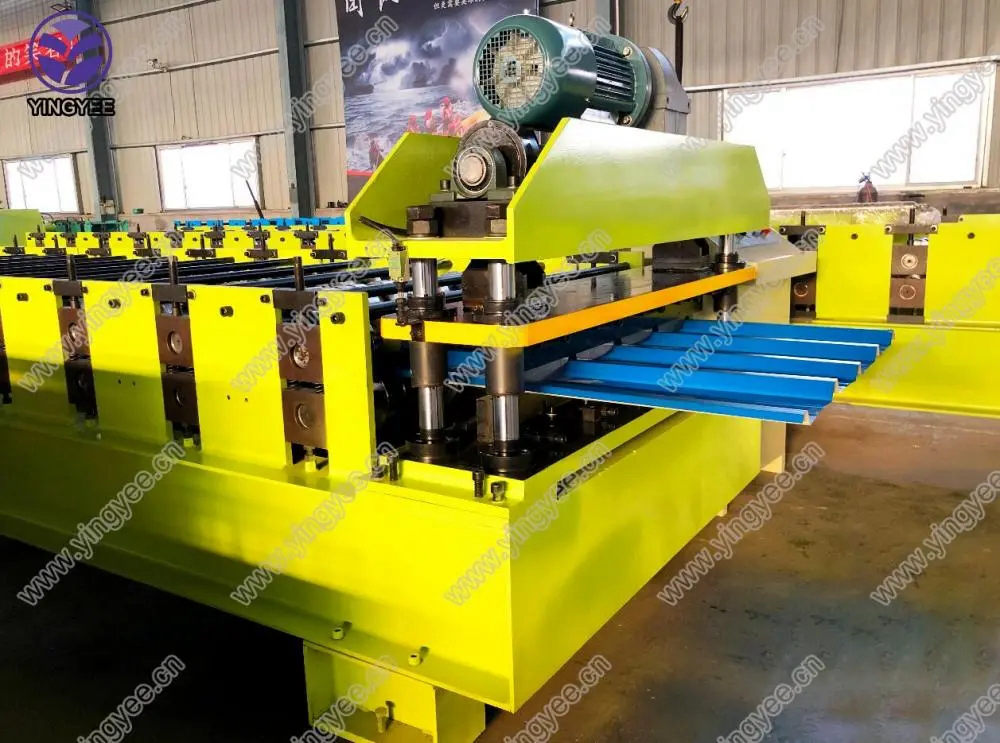
The Essential Role of C Purlin Roll Forming Machines in Modern Construction
In the ever-evolving landscape of construction and manufacturing, efficiency and precision are paramount. Among the myriad of tools and machinery that aid in the process, the C purlin roll forming machine stands out as a vital contributor to the industry's ability to meet modern demands. This article explores the significance of C purlin roll forming machines, their operational mechanisms, and their advantages in contemporary construction.
What is a C Purlin?
Before delving into the specifics of roll forming machines, it is important to understand what a C purlin is. C purlins are structural components made from steel that are shaped like the letter C. They are primarily used as horizontal supports in buildings and other structures, offering stability and strength. The excellent load-bearing capacity of C purlins makes them ideal for use in industrial and commercial buildings, pavilions, and even residential projects.
Overview of C Purlin Roll Forming Machines
A C purlin roll forming machine is designed to manufacture C purlins efficiently and consistently. The machine operates through a highly automated process that transforms raw steel coils into precise purlin shapes. The process begins with feeding the raw material into the machine, which then passes it through a series of rollers. These rollers progressively shape the steel into the desired C profile.
The roll forming process involves several key steps 1. Coil Loading Steel coils are loaded onto the uncoiler. 2. Feeding The steel coil is unwound and fed into the forming machine. 3. Forming The steel passes through a series of rollers, which shape the material into C purlins. 4. Cutting Once the desired length is achieved, a cutting tool slices the purlins to size. 5. Stacking Finally, the finished purlins are stacked for easy transport and storage.
Advantages of Using C Purlin Roll Forming Machines

1. High Production Efficiency One of the main advantages of C purlin roll forming machines is their ability to produce large quantities of purlins in a short amount of time. This high throughput is essential for meeting the demands of large-scale construction projects.
2. Consistency and Precision Automated roll forming ensures that each purlin is produced to the exact specifications needed for construction. This level of precision minimizes waste and ensures a higher quality end product.
3. Cost-Effectiveness By automating the production process, companies can reduce labor costs and material waste. This efficiency allows for a lower cost per unit, making it an attractive option for manufacturers and builders.
4. Flexibility Modern C purlin roll forming machines can be easily adjusted to produce different sizes and shapes of purlins. This flexibility allows manufacturers to cater to specific project requirements without significant downtime.
5. Durability and Strength C purlins produced through roll forming exhibit excellent mechanical properties. The cold-forming process enhances the strength of the steel, ensuring that the purlins can withstand structural loads.
Conclusion
In conclusion, C purlin roll forming machines are an essential component of the modern construction industry. They provide an efficient, cost-effective, and precise method for producing high-quality C purlins that are integral to various structural applications. As construction projects continue to increase in scale and complexity, the role of advanced machinery like the C purlin roll forming machine will only become more significant, paving the way for innovation and improved construction methods. The combination of technology and engineering in these machines exemplifies the progress of the construction industry, ensuring that it can meet both present and future demands effectively.